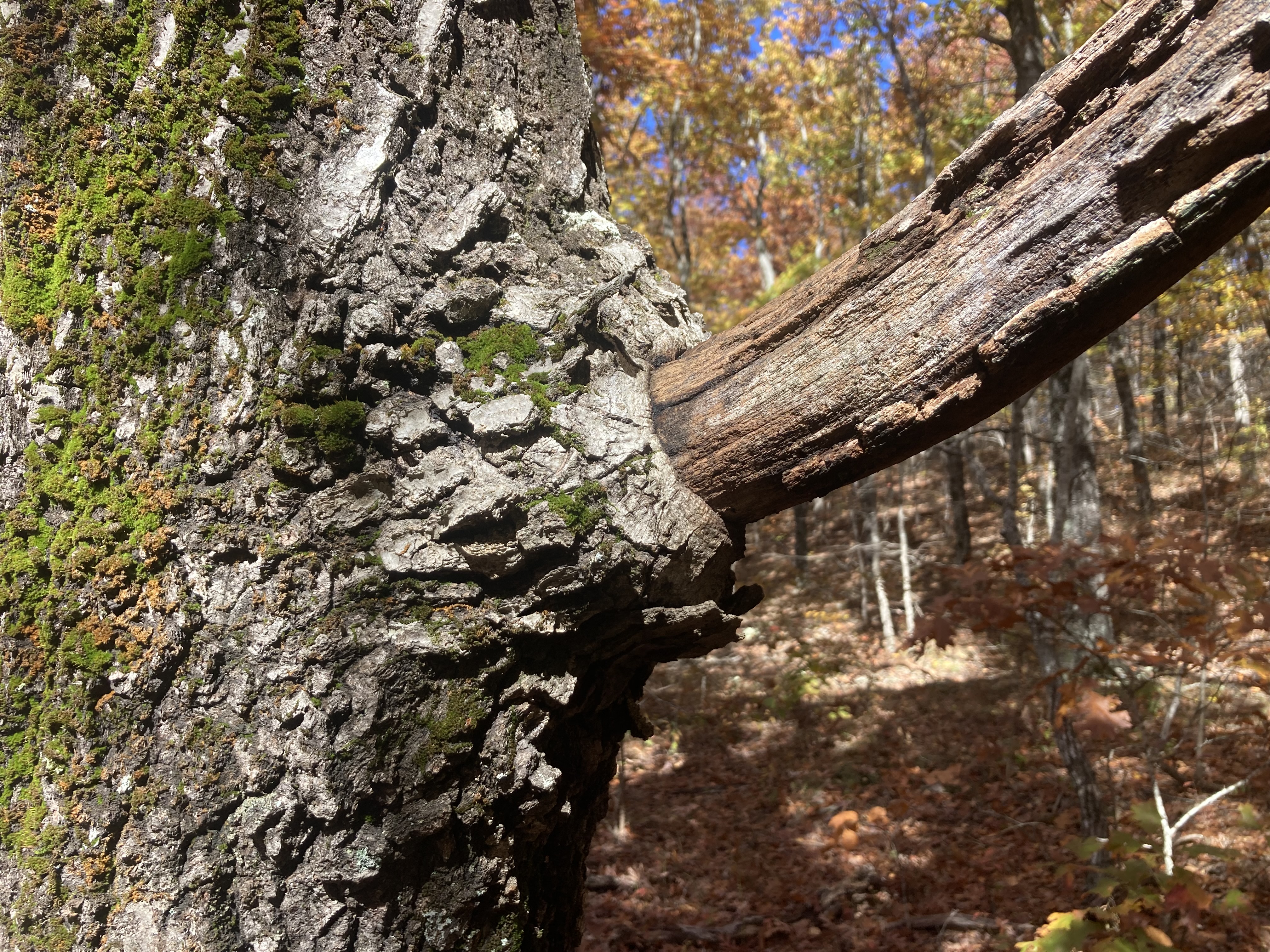Tree Cavities
Contact
University of Arkansas System Division of Agriculture
Cooperative Extension Service
2301 S. University Ave.
Little Rock, AR 72204

Tree Cavities
“Big and strong” is the impression trees leave with us as we walk through the woods, yet even a cursory inspection will show that such is not always the case. Dead and broken limbs — often high in the canopy — indicate not all may be well in the silvan world. Imperfections often show up as internal decay. These hollows are a weak point for the tree but are an important part of the forest ecosystem because they provide nesting opportunities for the creatures that call the woods home. Let us consider tree cavities.
Scientists have studied tree decay for the past several centuries, but it was not until Dr. Alex Shigo (1930 — 2006) systematically studied the subject that we gained a full understanding of the biology of wood decay in living trees. Shigo rewrote the book on tree decay and changed the way forestry professionals and arborists manage wounded trees.
After earning his doctorate in plant pathology in 1960, Shigo was employed by the U.S. Forest Service as a tree pathologist where he developed the techniques needed to study wood rot in forest trees. Instead of racks of test tubes, his tool of choice was a chainsaw. The first one-man chainsaw was introduced in 1950, and in his work, Shigo became proficient at dissecting trees longitudinally to see what was happening as decay advanced through the bole of the tree.
Probably his biggest discovery was learning that trees have a way of walling off decay in a process he called compartmentalization. He found that tree trunks can physically and chemically alter cells to prevent the spread of disease-causing organisms within their living core. Four types of walling-off have been described with the fourth and strongest type — the barrier zone — allowing trees to live on after wood rot has hollowed out the heartwood of a tree.
Before Shigo’s work, the common practice amongst arborists was to clean large cavities of decayed wood back to sound tissue and then sometimes fill these holes with concrete. This was absolutely the wrong thing to do. By cleaning the tissue back to sound wood, the barrier zone was breached and decay spread to the healthy tissue. The big hunk of concrete was but a large rock lodged inside the tree and every time the weather changed, the concrete blob would sweat, adding moisture as the decay spread.
Shigo also studied the effectiveness of tree wound dressings. He found they were completely ineffective in preventing decay and, in many cases, actually increased the rate of decay after a limb was removed. His recommendations for repairing wounded trees revolved around doing all that was possible to encourage rapid cambial growth around the wound so that the tree would wall off and thus compartmentalize the decay.
When branches are removed, two things should be considered. First, small branches leave small wounds, thus they heal more quickly. While it is not always possible, removing unwanted limbs when they are thumb-sized or smaller is always best. Such wounds are small enough that the wound scar will often be closed in one growing season. Close the wound, exclude oxygen and the possibility of decay stops.
The second important concept — especially with larger limbs — is making the pruning cut at the end of the limb collar. The limb collar is a swollen area at the base of the limb. This section of the tree is pretty inconspicuous but it is one of the three cambial regions of a tree where new cells form. The most obvious growing point of a tree is the apical meristem, which is responsible for the height increase of the tree. The second growing point is cambium region just below the bark that lays down new cells as the girth of the tree increases. The third is the limb collar which seals off a broken limb and preserves the integrity of the trunk.
The advice to never leave a stub while pruning is good, but the limb collar should never be removed. Doing so increases the size of the wound by a factor of two or three times and removes the cells that will close the wound. If the limb collar is removed a limb pruning scar may never close and internal decay is sure to spread.
Evaluating the impact of internal wood rot on standing trees (and power poles) often involves some guesswork, or you could call in a tree doc with the latest equipment. In the 1970s Shigo invented the Shigometer — a device that measured electrical conductivity changes as the current passed through sound or decayed wood. While it worked, it only did so under a narrow range of specific conditions. More modern approaches employ ultrasound equipment and stress wave evaluation. Or you could always just hope that an owl decides to live in the cavity and enjoy an avian neighbor.
